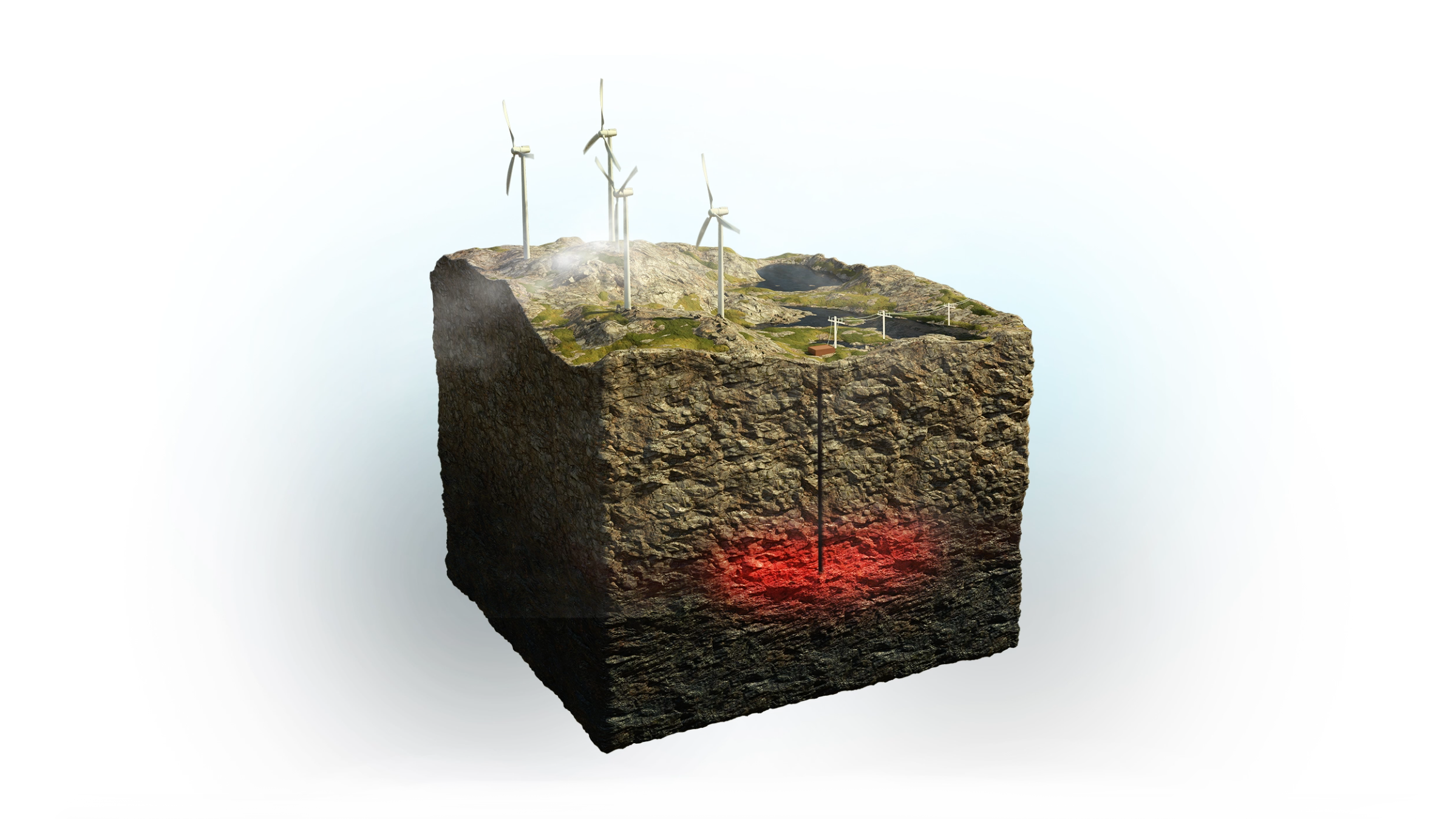Energy storage could hold the key to successful scaling of renewable energy production. That is because large-scale storage of energy from solar, wind or hydropower would balance the intermittency of renewables to provide a stable, reliable electricity supply.
Until now, however, energy storage solutions have not been large or effective enough to deliver what is needed. Solutions such as lithium-ion batteries also require significant quantities of rare earth minerals, as well as huge land areas.
iHEAT is Ruden’s solution for large-scale and high-quality energy storage, which is a high-temperature expansion of the HEAT system.
Using active reservoir engineering, including cementing and enhancement of the fracture network, the system aims to create a high-enthalpy reservoir for storing heat that can be converted into electricity, directly under a renewable energy production site, such as a wind farm, incineration plant or a solar power station.
Renewable energy storage
The heat can be stored at depths of between 200 and 400 metres, at temperatures of up to 170 °C. Such high-enthalpy heat storage facilitates direct or indirect generation of electricity. The concept simulates a natural geothermal reservoir, but at shallower and far less expensive depths.
The stored heat can be converted back to electricity as needed, and distributed directly to the grid. The iHEAT system could therefore enable a constant flow of electricity from otherwise intermittent sources such as solar power, wind energy and other industrial seasonal sources of energy.
Concrete Benefits
Ruden’s iHEAT system could provide large-scale and emission-free energy storage for producers or renewable energy, ensuring a constant flow of energy from these sources.
Apart from the electricity generating facilities, the iHEAT system will be entirely underground.
Market Potential
The global market for energy storage could reach 1 000 gigawatts in the next 20 years, according to McKinsey. As demand for renewable energy grows all over the world, energy storage could be an indispensable counterpart.
